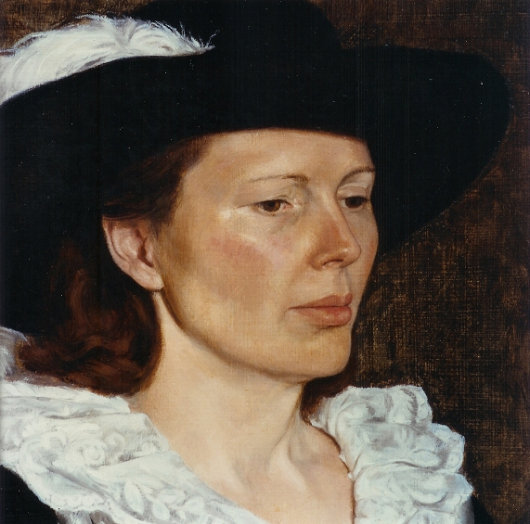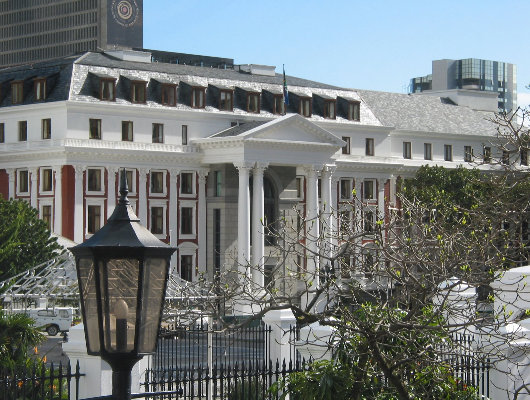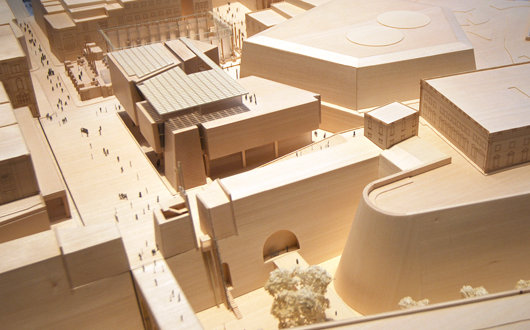2010 March
About Andrew Cusack
 Writer, web designer, etc.; born in New York; educated in Argentina, Scotland, and South Africa; now based in London.
Writer, web designer, etc.; born in New York; educated in Argentina, Scotland, and South Africa; now based in London. read more
News
Blogs
Reviews & Periodicals
Arts & Design
World
France
Mitteleuropa
Knickerbockers
Argentina
The Levant
Africa
Cape of Good Hope
Netherlands
Scandinavia
Québec
India
Muscovy
Germany
Academica
Hans Laagland

Oil on wood, 1980
“It does not matter what the artist paints, but how he paints it,” proclaims the painter Hans Laagland. “That is why Rubens is a genius while Picasso’s work is passable.” Laagland, a Fleming himself, is one of the scant few artists in our day who paint in the grand style of the Flemish baroque master. He was born in Belgium’s Dutch province in 1965 and took up the brush and easel when ten years old. The young boy quickly developed a fascination with Rubens, considering and absorbing his works in the neighbouring city of Antwerp. Laagland’s emphasis is on traditional craftsmanship, painting in oils on wood panel, investigating and recreating the Old-Dutch lead white used by Rembrandt and the vermilion of Rubens. With a particularly capable hand at portraits, his work can be seen everywhere from the Norbertine abbey at Postel to the Belgian parliament in Brussels.
“It has been downhill ever since Rubens,” the painter says. Rembrandt — “Rubens’s disabled cousin” according to Laagland — was the last great painter; “What comes after him no longer has any significance.” Those versed in the Netherlandic tongue can read Mr. Laagland expounding upon his artistic ideas in De Kunstverduistering (“The Eclipse of Art”), his extended essay on art and painting now published as a book by KEI Zutphen. (more…)
The National Assembly

Despite the longer history behind the original wing of South Africa’s Parliament House, when most people think of Parliament today they think of the 1983 wing that currently houses the National Assembly. The wing was designed by the architects Jack van der Lecq and Hannes Meiring in a Cape neo-classical style similar to the rest of the building, and it is actually quite a handsome composition despite the awkwardly proportioned portico, which is too tall for its width or two narrow for its height. (more…)
Song & Merriment on Lake Garda’s Shores
The Roman Forum has released the daily program of this year’s Summer Symposium taking place at Gardone on Lake Garda in Italy. What a host of subjects covered! Lammenais, Americanism, St. Pius X, the economic order, legal positivism, G. K. Chesterton, Blessed Emperor Charles, Personalism, the Catholic media, Dean Swift, not to mention cocktail parties, song, and general merriment.
If one has the means but not the time, why not consider making a donation towards a full or partial scholarship? I’m told the list of applicants for scholarships is long, and these are often the most keen participants in such intellectual and social endeavours. More infomation on the Symposium can be found here.
‘Starchitecture’ Assaults the Stately City
In the Heart of Old Valletta, Architect Renzo Piano Plans a Gate without a Gate, a Theatre with no Roof, and a Parliament on Stilts

“THE MOST HUMBLE City of Valletta” is the official title of Malta’s capital, which was founded in response to Moorish threats and withstood the onslaught of Nazi bombers. But ‘La Ċittà Umilissima’ is now facing a humiliation brought about by its own rulers, who have commissioned the modernist architect Renzo Piano to reshape the entrance to the oldest quarter of the city. ‘Starchitects’ like Piano are so called because their temporal success lies more on their ability to create hype about their sensational and novel designs than on the quality and timelessness of their work itself. Most notorious for collaborating with Richard Rogers on the despised Pompidou Center in Paris, Piano has re-envisioned Valletta’s city gate without a gate, placed a new Maltese parliament on stilts next to it, and developed plans for a roofless theatre on the bombed-out ruins of the Royal Opera House.
The foundation of the Maltese capital was initiated by the Order of Malta during its rule over the island, not long after the famous Ottoman attack of 1565 was repulsed. The city takes its name from Jean Parisot de Valette, one of the greatest men to have ever served as Prince & Grand Master of the Sovereign Military & Hospitaller Order of St. John of Jerusalem, and the knights’ impact on Valletta’s development have led some to call it “the city designed by gentlemen for gentlemen”. This stateliness led some to give ‘The Most Humble City’ its second moniker of ‘La Superbissima’ — the most proud. (more…)
Brothers Aboard the Ship of State
The Viscount Philippe de Villiers is an MEP, sometime French presidential candidate, and head of the Mouvement pour la France but his brother, General Pierre de Villiers, has just been named personal Chief of Staff to the President of the Republic (whose name we refrain from mentioning, lest we feel compelled to boo and hiss). Given this recent appointment, we reckon that General de Villiers outranks his brother in the grand apparatus of state; Chef d’etat-major particulier beats President of the General Council of the Vendée.
There is, however, at least one regard in which the civilian has his military brother beat: Pierre only has six children, Philippe has seven.
Search
Instagram: @andcusack
Click here for my Instagram photos.Most Recent Posts
- Letters Patent May 8, 2024
- Bicycle Rack April 29, 2024
- Burns Tower April 19, 2024
- Patrick in Parliament March 18, 2024
- Articles of Note: 13 March 2024 March 13, 2024
Most Recent Comments
Book Wishlist
Monthly Archives
Categories


